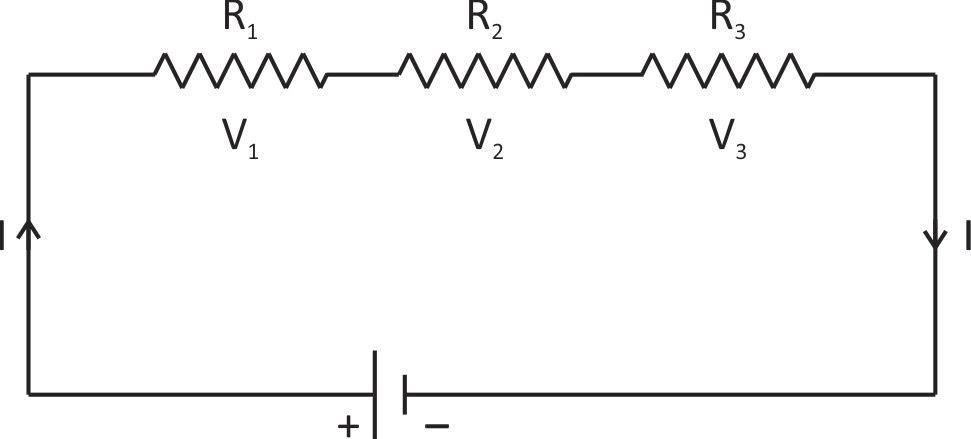
Explain and derive equivalent Resistance formula for 3 Resistors connected in Pure series. Generalize the formula?
Answer
500.4k+ views
Hint: When three resistors are concealed in derives then the same current passes through each resistor but the voltage drop is different for each resistor.
Complete step by step solution:
According to Ohm’s formula V = IR.
When three resistors are connected in series then the same current passes through each resistor but the voltage drop is different for each resistor. If V is the applied voltage and
According to ohm’s law
V = IR
So, the equivalent resistance or the total resistance of the circuit can be defined as a single value of resistance that can replace any number of resistors connected in series without altering the value of the current or the voltage of the circuit.
If we have n resistance connected in series, then generalized formula for equivalent resistance is

We know that applied voltage is (v)
We also know that
V = IR (from ohm’s law)
So, the equivalent resistance or the total resistance of the circuit can be defined as a single value of resistor connected in series with altering the values of the current or voltage in the circuit.
Note: If three or more resistors with the same value are connected in parallel, then the equivalent resistance is equal to
Complete step by step solution:
According to Ohm’s formula V = IR.
When three resistors are connected in series then the same current passes through each resistor but the voltage drop is different for each resistor. If V is the applied voltage and
According to ohm’s law
V = IR
So, the equivalent resistance or the total resistance of the circuit can be defined as a single value of resistance that can replace any number of resistors connected in series without altering the value of the current or the voltage of the circuit.
If we have n resistance connected in series, then generalized formula for equivalent resistance is

We know that applied voltage is (v)
We also know that
V = IR (from ohm’s law)
So, the equivalent resistance or the total resistance of the circuit can be defined as a single value of resistor connected in series with altering the values of the current or voltage in the circuit.
Note: If three or more resistors with the same value are connected in parallel, then the equivalent resistance is equal to
Recently Updated Pages
Master Class 9 General Knowledge: Engaging Questions & Answers for Success

Master Class 9 English: Engaging Questions & Answers for Success

Master Class 9 Science: Engaging Questions & Answers for Success

Master Class 9 Social Science: Engaging Questions & Answers for Success

Master Class 9 Maths: Engaging Questions & Answers for Success

Class 9 Question and Answer - Your Ultimate Solutions Guide

Trending doubts
Give 10 examples of unisexual and bisexual flowers

Draw a labelled sketch of the human eye class 12 physics CBSE

Differentiate between homogeneous and heterogeneous class 12 chemistry CBSE

Differentiate between insitu conservation and exsitu class 12 biology CBSE

What are the major means of transport Explain each class 12 social science CBSE

Why is the cell called the structural and functional class 12 biology CBSE




